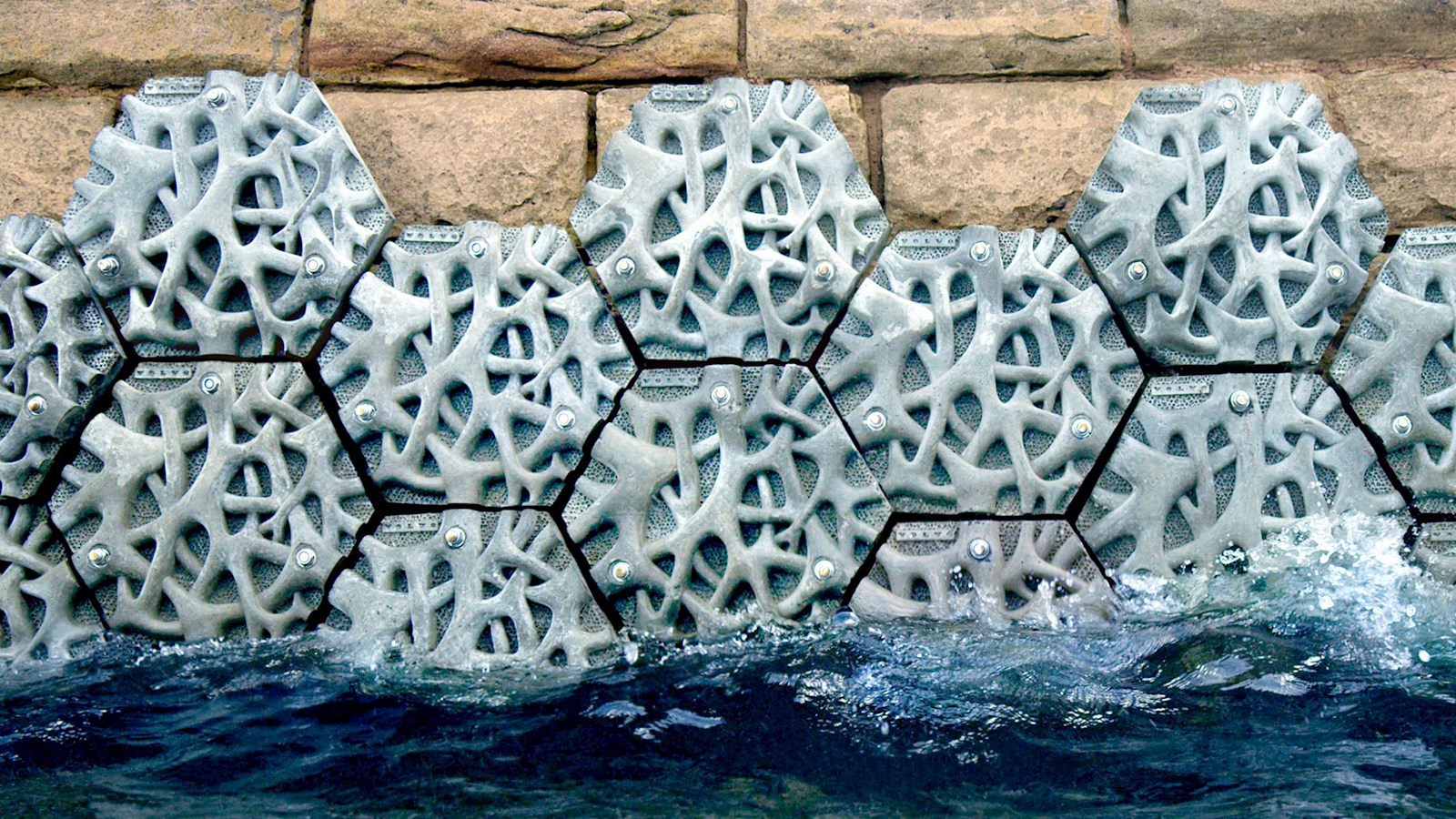
whiteGREY: Volvo's Living Seawall

whiteGREY: Volvo’s Living Seawall
Creatively combatting pollution and promoting biodiversity
One garbage truck of plastic enters the world’s oceans every minute, and more than half of Sydney’s shoreline is artificial. Rich, vibrant habitats have been replaced with seawalls and degraded by plastic pollution. The Volvo Ocean Race has been hosting beach clean-ups all over the world to help combat plastic pollution.
But while they’re important, beach clean-ups alone aren’t enough to save our oceans. Solving the problem of plastic requires a truly innovative approach to creativity. That’s why Volvo partnered with whiteGREY, Sydney Institute of Marine Science and Reef Design Lab to create the Living Seawall.
Together, they came up with the idea of using concrete reinforced with recycled plastic to create seawall tiles that mimic the design of native mangroves. Using 3D printing technology, the team helped replace sea walls with these sea-life-affirming tiles that encourage ocean biodiversity and improve water quality.
The Living Seawall was unveiled by Volvo at a beach clean event in Rose Bay on World Environment Day. The complete Living Seawall, featuring 50 tiles measuring 50cm x 50cm, will be built over the next few months and installed at a location in Sydney Harbour creating one of the world’s largest living seawalls.

